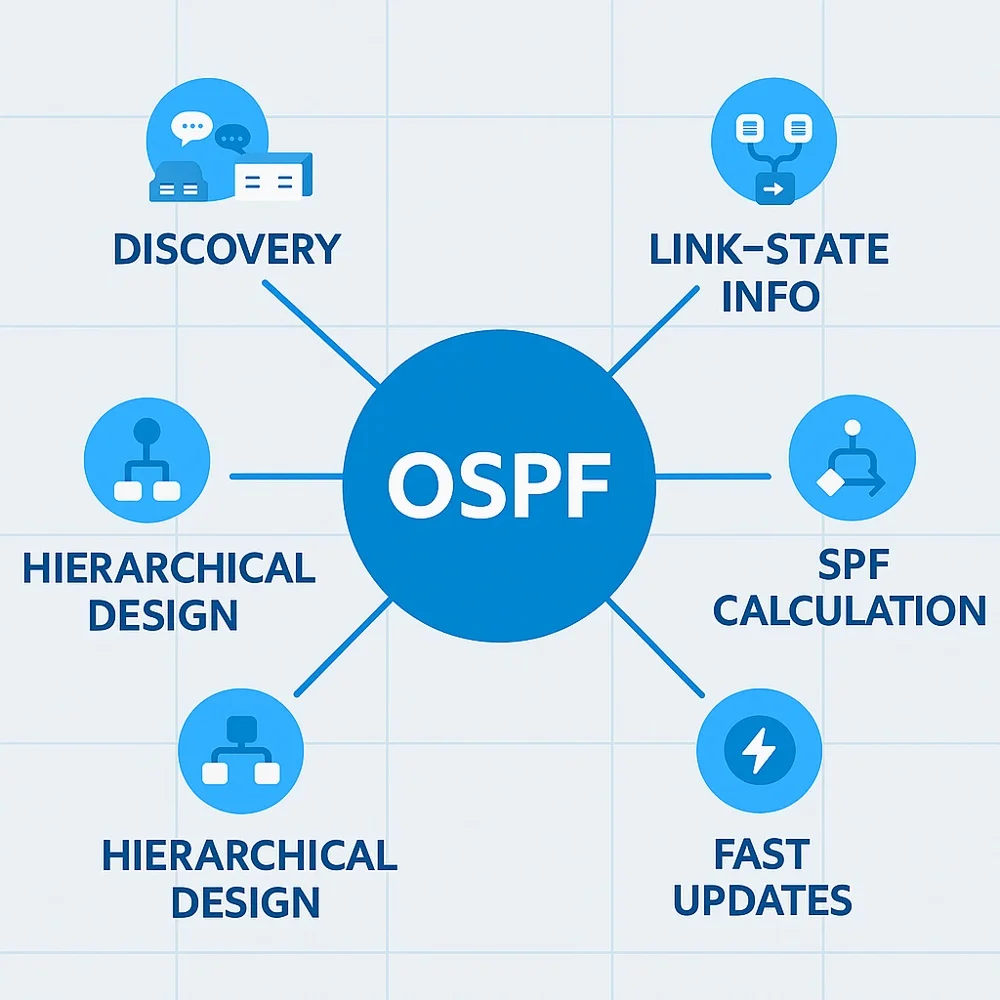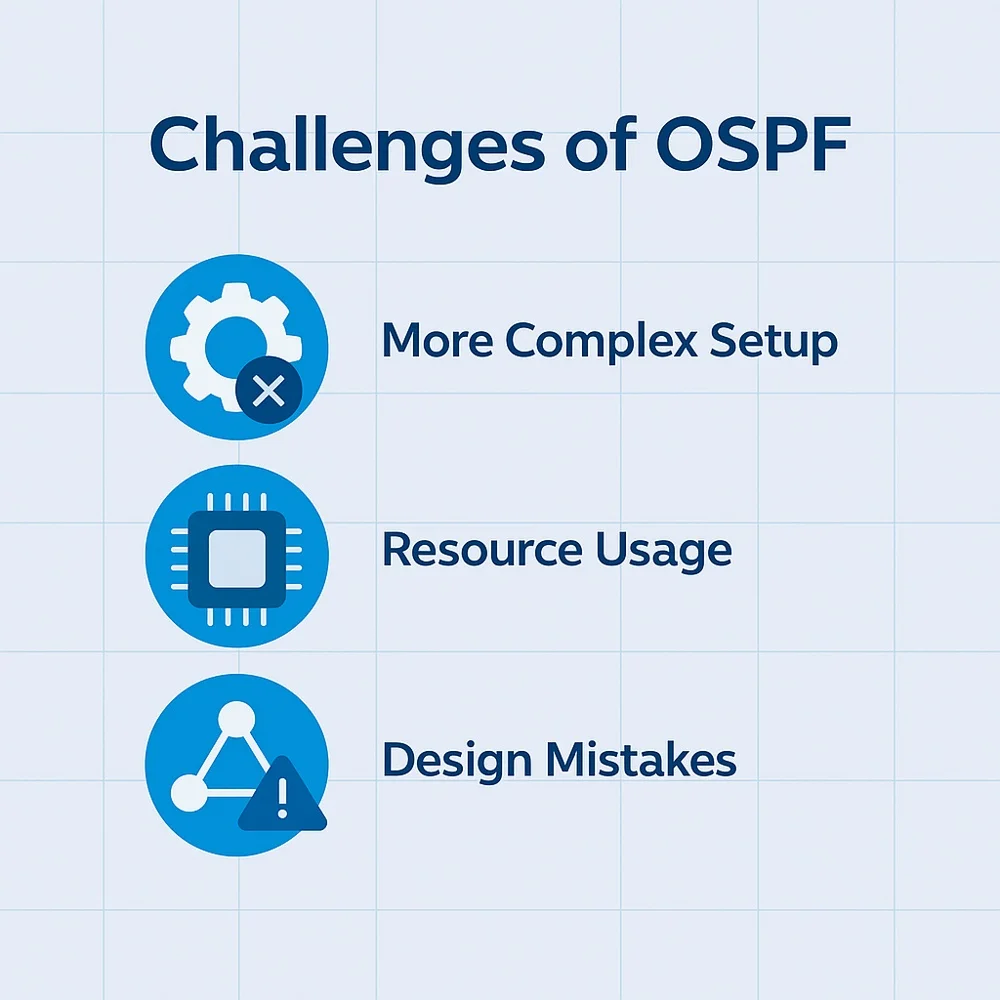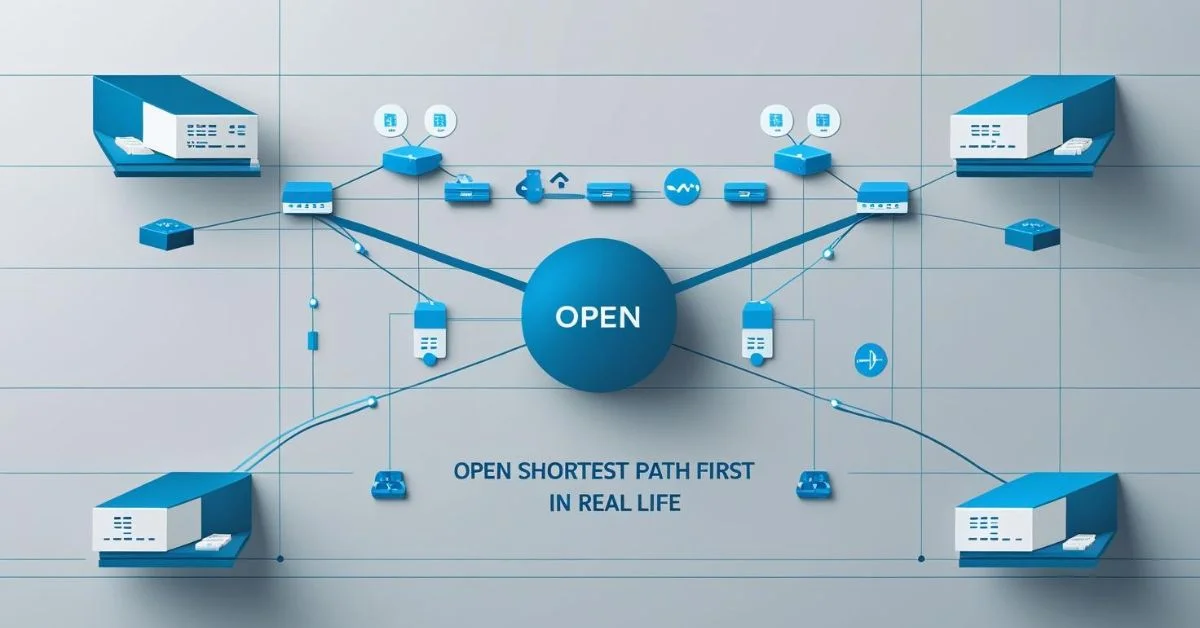Open Shortest Path First (OSPF) is a commonly used routing protocol that helps routers determine the best route for data to travel across a network. It plays a key role in the smooth operation of many real-world networks including businesses, universities and internet providers.
What is Open Shortest Path First (OSPF)?
Open Shortest Path First is a form of interior gateway protocol (IGP) that uses a link-state method. In this model, each router builds a detailed view of the network.
This process involves gathering information from neighboring routers to create a full map of the network structure. Once the map is complete, the router uses it to determine the shortest and most efficient route for data. To perform this calculation, OSPF uses Dijkstra’s algorithm, which finds the optimal path based on various metrics. Unlike simpler routing protocols that only consider the number of hops, OSPF takes into account link speed and other performance-related factors for more accurate routing decisions.
What an Open Shortest Path First Operates?
In practice, OSPF works in a series of steps:

- Discovery with Hello Messages: Routers first discover nearby routers by sending Hello messages. This helps them build relationships with neighbors.
- Sharing Link-State Information: Once neighbors are identified, routers exchange link-state information using special messages called LSAs (Link-State Advertisements).
- Creating a Network Map: Each router uses these LSAs to build a map of the entire network.
- Shortest Path First (SPF) Calculation: With the map, routers apply Dijkstra’s algorithm to figure out the fastest path to each destination.
- Hierarchical Design with Areas: To keep things efficient, OSPF supports dividing the network into sections called areas. Each area reduces overhead and keeps routing simpler. Area 0 acts as the central region in OSPF’s structure and is commonly referred to as the network’s backbone.
- Fast Updates: If something changes (like a link failure), Open Shortest Path First quickly reacts and updates routes across the network.
Real-Life Examples of OSPF
In everyday applications, Open Shortest Path First ensures that networks function efficiently and remain stable:
- Corporate Networks: Companies with multiple buildings or offices use OSPF to make sure employees can access shared systems quickly and reliably.
- Internet Service Providers (ISPs): ISPs rely on OSPF to direct data within their internal networks.
- Educational Institutions: Universities with large campuses often use OSPF to link departments, labs and dormitories.
Example Scenario:
Imagine a hospital system with three campuses. Each campus has its own routers and departments. Using OSPF, the hospital creates an efficient internal network. Each campus acts as an OSPF area, all linked through a central backbone (Area 0). If one path fails, OSPF quickly finds an alternate route so that patient data continues to flow without interruption.
Advantages of Using Open Shortest Path First
- Quick Reaction: OSPF responds rapidly to topology changes by recalculating and adjusting routes in real time.
- Supports Growth: It works well in both small and large networks because of its area-based design.
- Cross-Device Compatibility: Since OSPF is an open standard, it works with many brands of networking equipment.
- Security Options: OSPF supports various security methods to protect routing information.
- Equal Cost Load Balancing: OSPF can use multiple equal-cost paths to balance traffic more effectively.
Common Challenges in Real Networks

- More Complex Setup: Compared to simpler protocols like RIP, OSPF can be harder to configure.
- Resource Usage: OSPF requires more memory and CPU power because it stores and processes a lot of information.
- Design Mistakes: If areas are not planned properly, it can lead to inefficient routing.
Tips for Using OSPF Effectively
- Design with a Backbone: Always connect other areas to Area 0 to maintain proper routing.
- Secure the Routing Process: Enable OSPF authentication using passwords or MD5 to prevent fake updates.
- Keep an Eye on Neighbors: Use tools to monitor Open Shortest Path First (OSPF) neighbors and make sure all routers are synced.
- Use Appropriate Metrics: Adjust interface cost based on bandwidth to guide traffic efficiently.
- Limit LSAs When Needed: In large networks, limit the number of LSAs with stub areas to reduce overhead.
Open Shortest Path First (OSPF) in Modern Networks
Today, Open Shortest Path First is used not only in traditional networks but also in cloud environments, hybrid infrastructure and even in some SD-WAN setups. Its ability to adapt and scale makes it a reliable choice for modern network design.
In data centers, OSPF may be used in the core layer to provide redundancy. In smart cities, it can help connect different network zones, from public Wi-Fi to surveillance systems. Network engineers often prefer it for its predictability and control.
Final Thoughts
Open Shortest Path First goes beyond being a standard routing protocol; it serves as a foundation for building fast, reliable and well-organized networks. By building a clear view of the network and making quick decisions, Open Shortest Path First (OSPF) keeps data flowing safely and swiftly. Whether it’s used in a business, university, hospital, or cloud setup, understanding OSPF is essential for building robust and flexible networks.
With careful planning, regular monitoring and the right configuration, Open Shortest Path First helps network teams create systems that are fast, secure and prepared for future growth.



